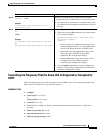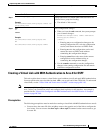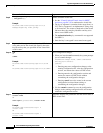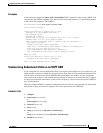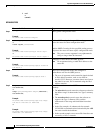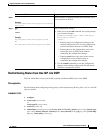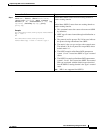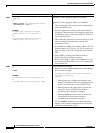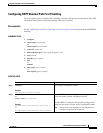
Implementing OSPF on Cisco IOS XR Software
How to Implement OSPF on Cisco IOS XR Software
RC-215
Cisco IOS XR Routing Configuration Guide
OL-14356-01
Redistributing Routes from One IGP into OSPF
This task redistributes routes from an IGP (could be a different OSPF process) into OSPF.
Prerequisites
For information about configuring routing policy, see the Implementing Routing Policy on Cisco IOS XR
Software module.
SUMMARY STEPS
1. configure
2. router ospf process-name
or
router ospfv3 process-name
3. router-id {router-id}
4. redistribute protocol [process-id] {level-1 | level-1-2 | level-2} [metric metric-value] [metric-type
type-value] [match {internal | external [1 | 2} | nssa-external [1 | 2}] [tag tag-value] [route-map
map-tag | route-policy policy-tag]
Step 6
interface type instance
Example:
RP/0/RP0/CPU0:router(config-ospf-ar)# interface
POS 0/2/0/3
Enters interface configuration mode and associates one or
more interfaces to the area.
Step 7
end
or
commit
Example:
RP/0/RP0/CPU0:router(config-ospf-ar)# end
or
RP/0/RP0/CPU0:router(config-ospf-ar)# commit
Saves configuration changes.
• When you issue the end command, the system prompts
you to commit changes:
Uncommitted changes found, commit them before
exiting(yes/no/cancel)?
[cancel]:
–
Entering yes saves configuration changes to the
running configuration file, exits the configuration
session, and returns the router to EXEC mode.
–
Entering no exits the configuration session and
returns the router to EXEC mode without
committing the configuration changes.
–
Entering cancel leaves the router in the current
configuration session without exiting or
committing the configuration changes.
• Use the commit command to save the configuration
changes to the running configuration file and remain
within the configuration session.
Command or Action Purpose



